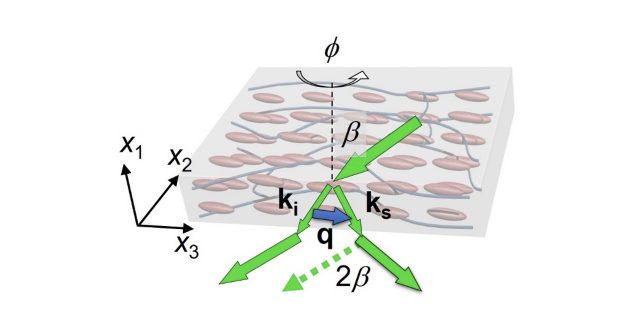
【Research Paper】”On the origin of elasticity and heat conduction anisotropy of liquid crystal elastomers at gigahertz frequencies”
WRHI Newsおすすめ
Published
(School of Materials and Chemical Technology/Dr. Junko Morikawa and Dr. Georgios Fytas)
“On the origin of elasticity and heat conduction anisotropy of liquid crystal elastomers at gigahertz frequencies”
Nature Communications (DOI: 10.1038/s41467-022-32865-1)
The strain dependence of the elastic anisotropy of liquid crystalline elastomers at gigahertz frequencies was investigated by Brillouin optical spectroscopy. Young’s modulus anisotropy was unexpectedly lower than that measured in tensile tests, suggesting a mismatch between the local mesogenic orientation and the large-scale orientation of the network chains. The strength of Young’s modulus anisotropy to uniaxial load was also unprecedentedly inconsistent with the continuously changing orientation observed in the tensile tests. Similarly, the thermal conductivity was also directional, showing slightly higher anisotropy than the elastic modulus anisotropy. Conceptually, this study reveals the different length scales involved in thermoelastic anisotropy and provides insight into the design of liquid crystalline elastomers on demand for high frequency applications.
For details, click here.
<Abstract>
